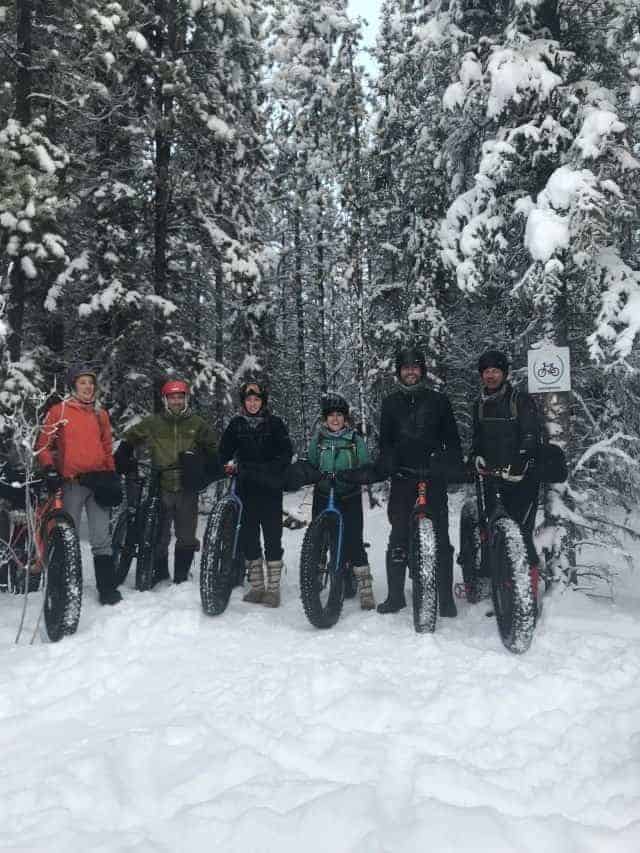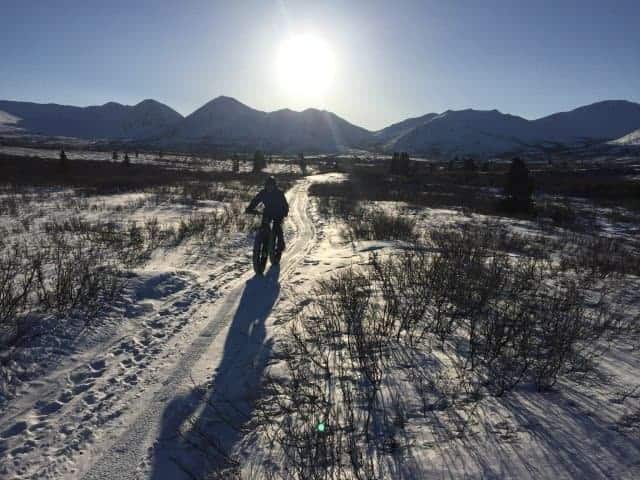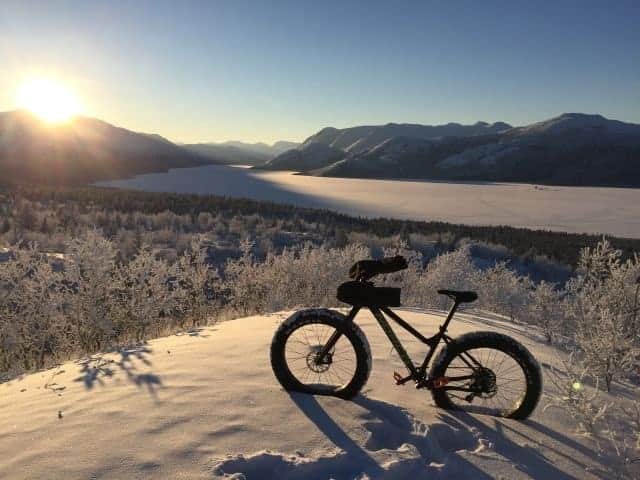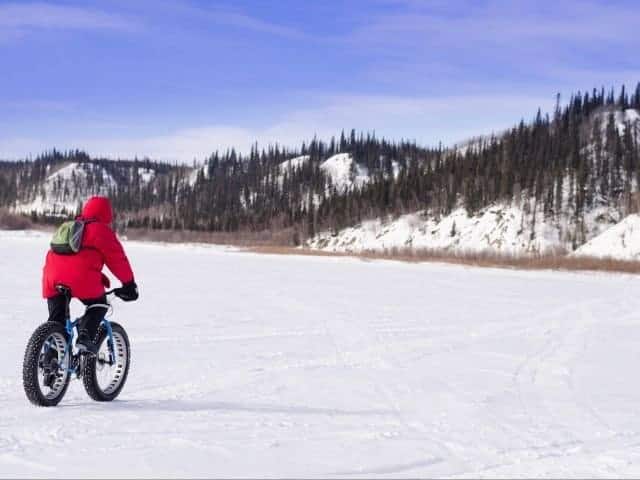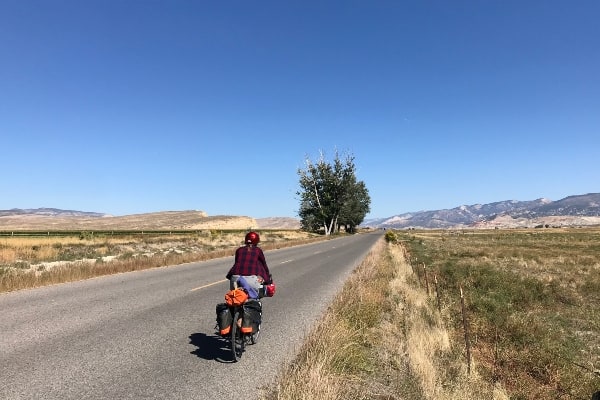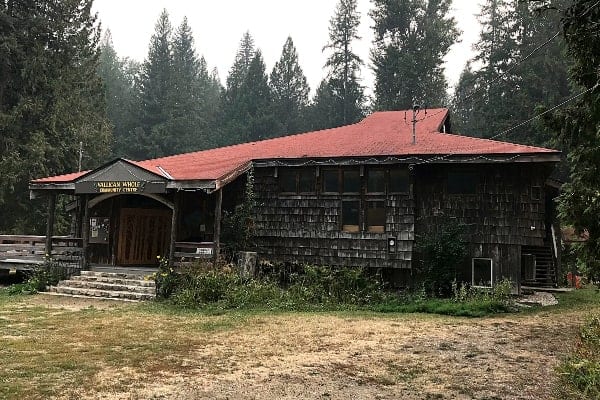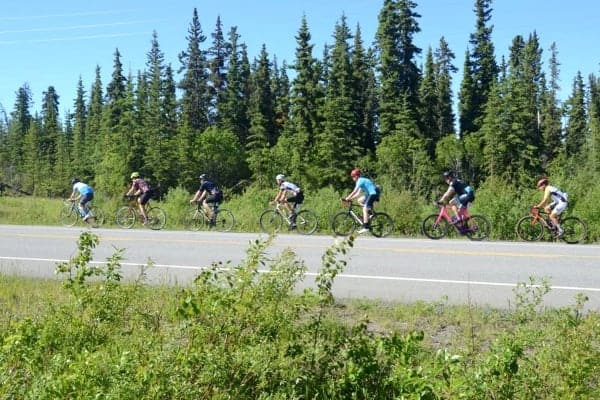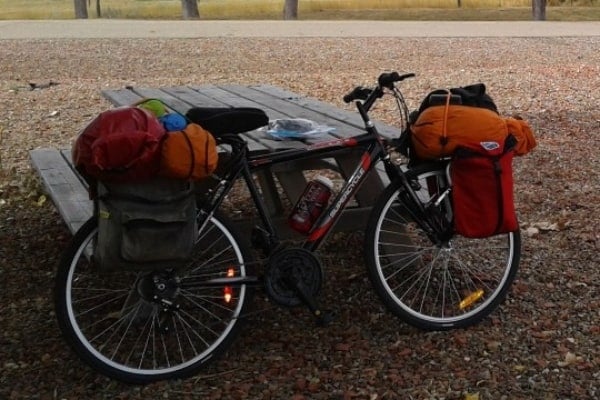December 1 is Global Fat Bike Day, a day to celebrate all things fat bike-related. But what exactly is it and why get into it? I caught up with Jonah Clark, owner of Icycle sports, to find out about their celebration and why fat-biking is so cool.
Fat biking is any riding with four- to five-inch tires, which allows riders to ride foot-packed snow, skidoo and dog mushing trails in the winter. The fat tires give excellent traction on snow and for exploring the Yukon. “The sport allows you to ride year-round. It’s a very stable bike,” said Clark, “Fat biking works in conjunction with skiing. Whitehorse often has little snow and is dry, making it ideal mountain-biking conditions. Convenience is you can go fat-biking from you backyard with dogs. It’s easier. When conditions are poor to ski, I fat bike.”
In 2006, when fat biking started, there was a diehard group of about 10 people riding when, in 2010, the wave hit Whitehorse. “It surprised me [with] the high uptake to commute to work with fat bikes, but [it was] useful, as [there was] no suspension but big tires, allowing [for] riding in most conditions,” said Clark. “ opened possibilities for commuting and exercising. Late winter riding is great, too. You can access places you couldn’t in the summer, as you need frozen lakes to actually get there.”
This year, Icycle will be stationing its bike fleet at Mount McIntyre, with the Whitehorse Cross Country Ski Club. The rentals will be from their location as they can provide changing facilities and a sauna—and the trails are right there. So, no need to coordinate transporting a bike if you are a visitor to town or not set up with the right transportation racks.
What’s Global Fat Bike Day?
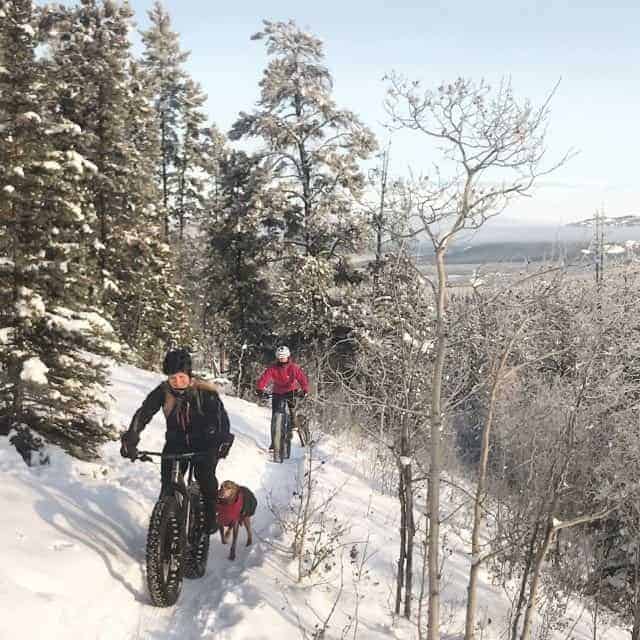
It started in 2012 when a group of fat biking Brits went for a ride together, and each and every year it gets bigger and more popular around the world (see www.fatbike.com). In Whitehorse, Icycle has celebrated the day for the past few years. First it started as a sale event for fat bikes, and now has become a popular and fun day at Mount McIntyre.
“We will be doing a day with free rentals, in early December, for Global Fat Bike Day, with a big group ride,” said Clark. “It includes a group ride, fire, snacks to Harvey’s Hut and on Porcupine trail.”
On December 1, you can rent a fat bike free. Reservations can be made at the Whitehorse Cross Country Ski club and also through Icycle Sports website.
Where to ride
At Mount McIntyre, cross-country ski trails cannot be used by fat-bikers; however, the Contagious Mountain Bike Club and the Whitehorse Cross Country Ski Club are continually working on trails for winter riding, which are the single-track bike trails. A popular starting trail is Porcupine. Those who want a challenge (if the conditions are right) should check out the Fetish and Collective trails. Grey Mountain also has a multi-use trail called Fat Bike Fever.
For questions on riding bikes anywhere during any season in the Yukon, contact the Contagious Mountain Bike Club at http://cmbcyukon.ca.
Backcountry Routes
(Always dependent on trail conditions (refer to backcountry safety in the winter): visit Yukon.ca and go to Emergency Preparedness for more tips and information
The Klondike Snowmobile Association (KSA) provides a large amount of trail work all over Whitehorse and beyond. You can visit their website for trail descriptions, and multi-use trails can be accessed by all. For specific details on these and more trail options, visit http://ksa.yk.ca/trails/yukon-trails.
- Bonneville Lakes loop at Fish lake – 20 kilometres (about 3 hours) A beautiful view with easy access, and a great way to get outside in the cold, short winter days
- Alligator Lake from Annie Lake Road—40 kilometres return ( 3–4 hours) 10 kilometres gradual climbing, until plateau, then along to the lake and back the same way—is a popular trail, and there are alternatives around this area to make loops.
- Dawson Overland trail – Braeburn to Takhini Hot Springs 100 kilometres (6–9 hours, or overnight)
It is useful to join the Klondike Snowmobile Association, as many groomed trails are conducted through this organization, but they also have backcountry cabins to use overnight and are in the middle of this route. Check out http://ksa.yk.ca/ for more information. This route requires some coordination with vehicle logistics, and also preparedness for the backcountry.
